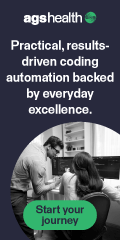Curbside Consult with Dr. Jayne 12/9/19
As part of the Maintenance of Certification process for my clinical informatics board certification, I have to complete a quality improvement project related to practice. Although there is quite a bit of flexibility in these projects, it’s been challenging for me to come up with something because I don’t have what many would consider a “typical” informatics practice. Many of my peers are either part of academic institutions where they have clear roles and/or titles. Others are part of healthcare delivery organizations where they have the ability to use data and processes for quality improvement. As an independent CMIO for hire, I often have a seemingly random mix of employers, ranging from startup technology vendors to large healthcare systems.
In these situations, I have contractor status. It’s a strange limbo where often you are treated like an employee but you’re actually not – you have many of the same responsibilities and are subject to the same rules as employees, but at the end of the day you don’t have the ability to direct your own work or propose new initiatives that would make sense for a straightforward project for board certification. My clinical situation is unique in that I’m employed, but very much part time and with no formal informatics role these days. My informatics influence is limited to cranky emails to our IT team asking why the system is suddenly allowing us to e-prescribe controlled substances when we do not have legitimate EPCS technology in place. My employer is reluctant to allow me to do anything with our data, since I’m essentially just an hourly physician.
I have another year or two before I have to finish this project, but I still feel somewhat adrift with it. Still, I am always on the lookout for ideas. One recently came across my desk, and I wonder if the practice would be willing to let me use their data if I could find some “what’s in it for me” for them. As an urgent care, we certainly see our fair share of trauma. Recently, JAMA Otolaryngology-Head & Neck Surgery published a study investigating a surge in cellphone-related facial trauma. Reported injuries range from being injured by a dropped or thrown phone to distraction-related falls.
The authors looked at 20 years of data from the US Consumer Product Safety Commission database looking at ER visits. They found 2,500 patients with phone-related head and neck injuries between 1998 and 2017, with a surge beginning in 2007, coinciding with the advent of smartphones. Approximately 40% of the subjects were between the ages of 13 and 29, and they were generally injured while walking, driving, or texting. Although cell phone use has also been linked to repetitive motion injuries, these were excluded from the study. The most common injuries were facial and head lacerations, followed by contusions, abrasions, and injuries to internal organs. The majority of patients were treated and released. Apparently there are more than six million patients treated for lacerations every year, with an estimated cost of $3 billion.
I’d be curious to find out how cell phones compare with other sources of trauma in our urgent care practice. We see over 300,000 patients a year so there should be a reasonable amount of data. Anecdotally, I think that sports-related injuries likely make up the lion’s share of our head trauma, followed by motor vehicle accidents, and falls. I’m betting that the causes would have to be determined by a chart audit, because many of my partners aren’t as specific with their coding as they could be. My quality intervention could be to assess whether visits were documented more accurately when physicians or scribes were doing the work, and to develop a curriculum to try to increase the specificity of coding. It’s kind of a soft project, but it at least addresses something that is clinically relevant in my practice. Still, it’s unlikely that I could talk my employers into it, since there’s not a clear return on investment for the time that would need to be spent educating clinicians and staff.
Another option for the quality project is for informaticists to conduct a 360-degree evaluation project. We did a 360-degree evaluation in residency and I’ve done it with a previous employer, and also with one of the community service organizations I work with. All three times I found it to be useful, although the episodic nature of some of my work might make this challenging. Some of my projects only last a month or two, which makes it hard for someone to get to know how you work, critique it, and then re-evaluate after you’ve completed some kind of intervention or change in how you work.
These are all part of the hoops that we have to jump through to maintain our board certification status. It’s particularly challenging in clinical informatics, since there can be such breadth in the type of work that we do. Our practice environments can be very different, and we may spend anywhere between 1% and 100% of our time doing informatics work depending on how much our employer wants to fund. I am glad that the American Board of Preventive Medicine, which is my certification body, recently approved a proposed Longitudinal Assessment Pilot as an alternative to the one-day board certification exam. It is supposed to launch in early 2021 and run for 24 months. Participants will answer 24 questions a year. This differs significantly from the longitudinal assessment pilot in my primary board, where we have to answer 100 questions a year for four years in order to replace the exam. It’s hard to imagine how the scope of clinical informatics can be distilled down to 24 questions a year, but unlike my primary board, it doesn’t seem that we have the opportunity to opt-out of this pilot.
I’m curious whether non-physicians are aware of the clinical informatics quality projects and whether your board-certified colleagues have pulled you in to help them get across the finish line. How are the projects perceived? Have there been positive outcomes? Or are they just a nuisance? On the physician side, is anyone else dreading their project? Leave a comment or email me.

Email Dr. Jayne.




















































































Is this HIStalk or Reddit? Hard to tell the difference with the comments being posted.